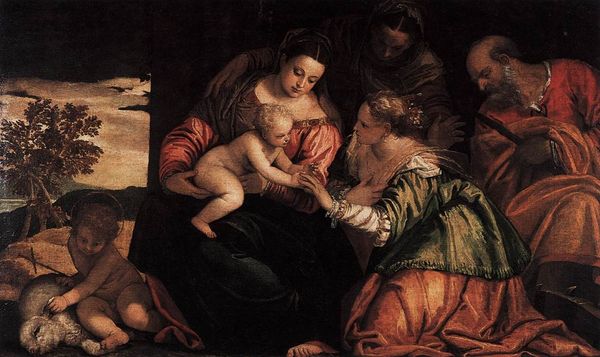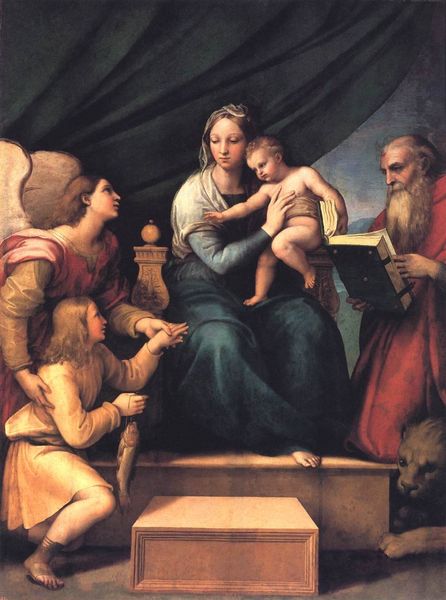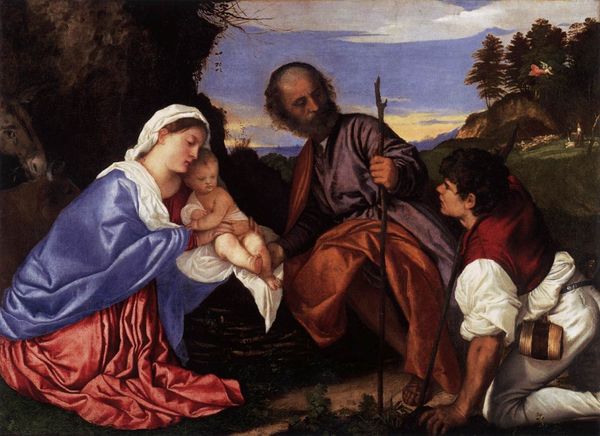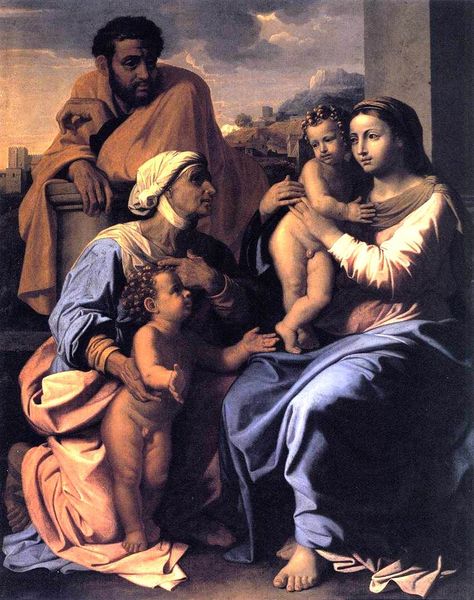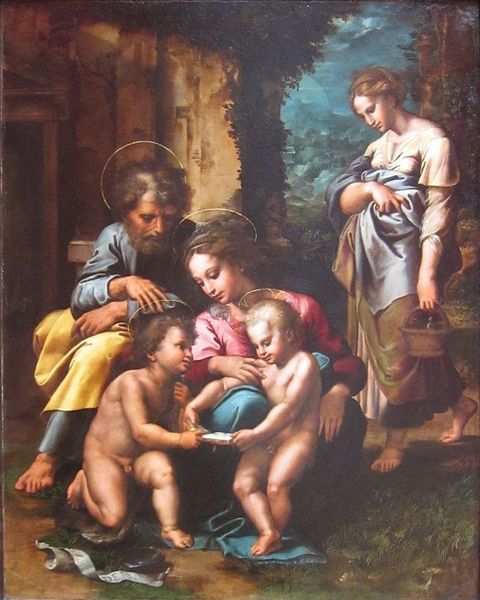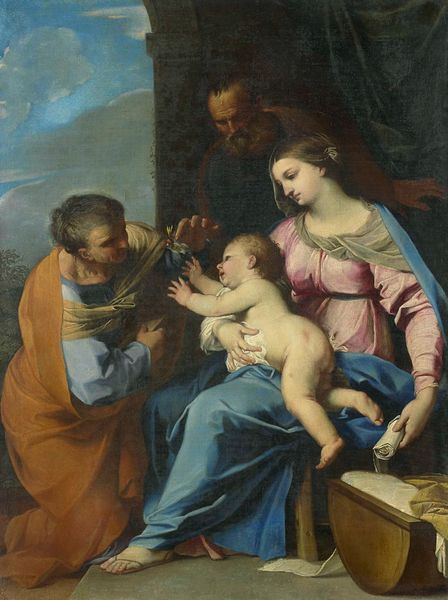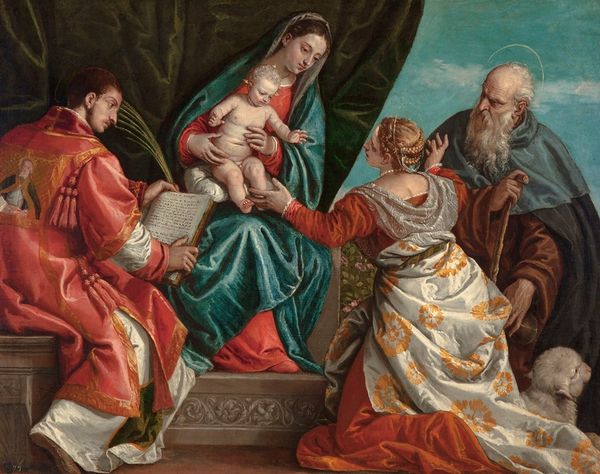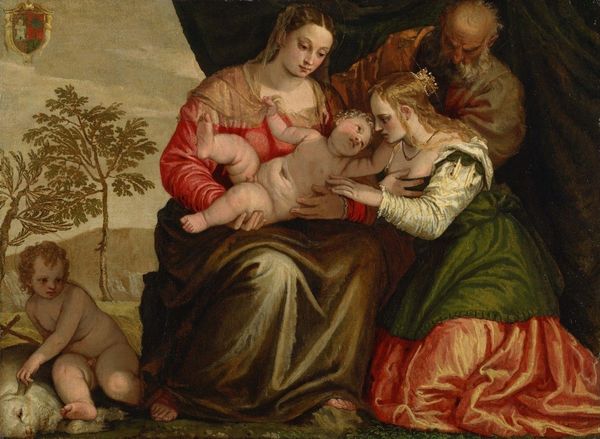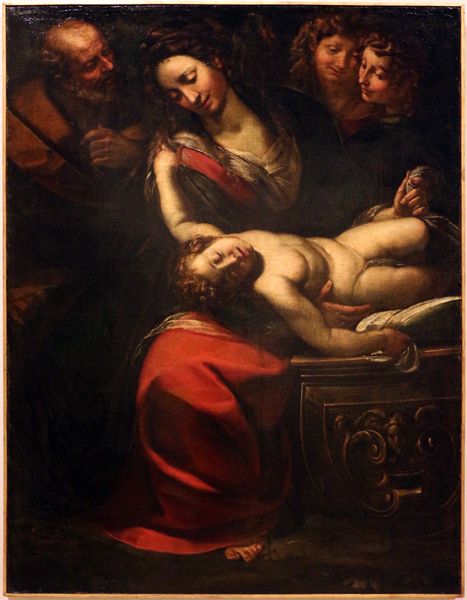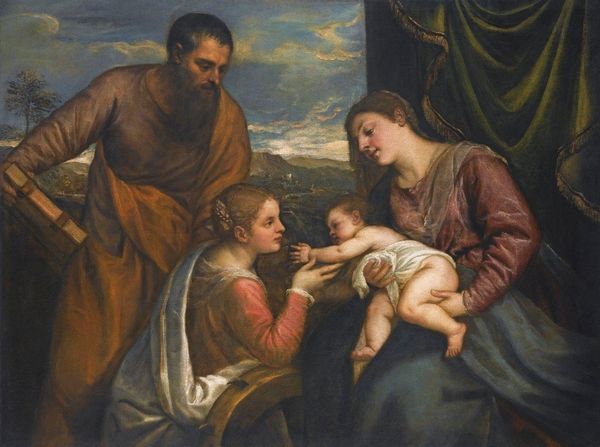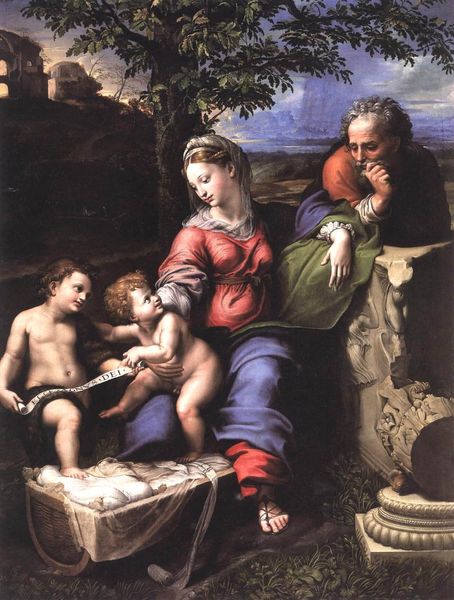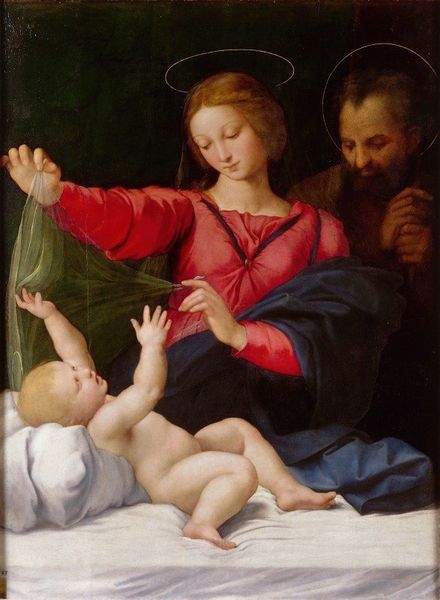
painting
#
portrait
#
painting
#
figuration
#
christianity
#
mythology
#
history-painting
#
italian-renaissance
#
christ
Dimensions: 87.5 x 69 cm
Copyright: Public domain
Editor: Here we have Lorenzo Lotto’s “Madonna and Child with St. Jerome, St. Joseph, and St. Anne,” painted around 1534. The muted tones create such an intimate, almost melancholy mood. With so many figures, what do you see as the primary narrative being conveyed here? Curator: Lotto, active during a tumultuous period of religious and social change in Europe, presents us not just with a religious scene, but also a meditation on family and lineage. Note how St. Anne’s inclusion links Mary to the House of David, a crucial theological point. It situates this holy family within a specific historical and cultural framework, validating Christian history. Do you notice anything about how they’re all looking in different directions? Editor: That’s interesting! Yes, St. Joseph looks outward, almost confronting the viewer, while the others seem lost in their own worlds. Curator: Exactly! Lotto consciously disrupts the idealizing conventions typical of Renaissance portrayals of the Madonna. What might those individual gazes suggest in terms of Lotto's commentary on familial duty or personal faith in a changing world? Considering Lotto’s career and the art market, it highlights the public role of sacred art. How does that affect the overall significance? Editor: Hmm… perhaps the separate gazes show an internal conflict or tension amidst changing social structures? I hadn't considered that before. Thanks for sharing! Curator: Indeed! And hopefully this shifted your viewing habits slightly too. By looking at the work through this socio-historical lens, we can understand that art serves complex functions that extend well beyond aesthetic appeal.
Comments
No comments
Be the first to comment and join the conversation on the ultimate creative platform.

